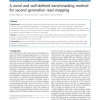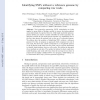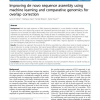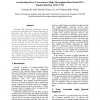14 search results - page 2 / 3 » REAL: an efficient REad ALigner for next generation sequenci... |
BMCBI
2011
12 years 8 months ago
2011
Background: Second generation sequencing technologies yield DNA sequence data at ultra high-throughput. Common to most biological applications is a mapping of the reads to an almo...
SPIRE
2010
Springer
13 years 2 months ago
2010
Springer
Next generation sequencing (NGS) technologies are being applied to many fields of biology, notably to survey the polymorphism across individuals of a species. However, while single...
BMCBI
2010
13 years 5 months ago
2010
Background: With the rapid expansion of DNA sequencing databases, it is now feasible to identify relevant information from prior sequencing projects and completed genomes and appl...
IPPS
2009
IEEE
13 years 11 months ago
2009
IEEE
Emerging DNA sequencing technologies open up exciting new opportunities for genome sequencing by generating read data with a massive throughput. However, produced reads are signif...
FPL
2010
Springer
13 years 2 months ago
2010
Springer
We demonstrate how Field Programmable Gate Arrays (FPGAs) may be used to address the computing challenges associated with assembling genome sequences from recent ultra-high-through...




